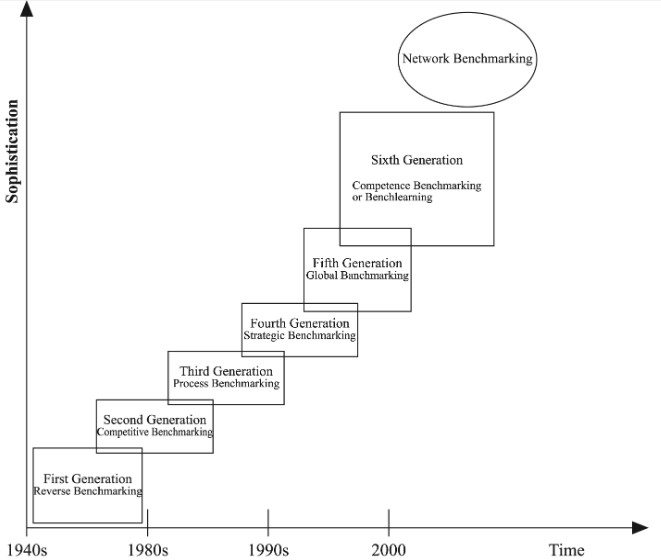Benchmarking is another tool which can be used to generate competitive advantage. It is a process of identifying in a systematic way superior products, services, processes and practices that can be adopted in an organisation to reduce costs, decrease operations cycle time, and provide greater customer satisfaction. The concept of benchmarking has been derived from land surveying in which it indicates a reference point called benchmark which is established as a base for surveys. Webster Dictionary defines benchmark as “a survey’s mark; previously determined position used as a reference point; standard by which something can be measured and judged.” Sarah Cook has defined benchmarking as follows:
“Benchmarking is a process of identifying, understanding, and adapting outstanding practices from within the same organisation or from other businesses to help improve performance.”
Features of Benchmarking
- Benchmarking is based on the theme “see what others do and try to improve upon that.” Therefore, this implies some kind of measurement which can be accomplished in two forms: internal and external. Both internal and external practices are compared and a statement of significant differences is prepared to identify the gap which should be filled.
- Benchmarking can be applied to all facets of a business; it includes products, services, processes, and methods. It goes beyond the traditional competitor analysis in the form of identifying strengths and weaknesses and includes clear understanding of how the best practices are used.
- Benchmarking is not aimed solely at direct product competitors but those organizations and businesses that are recognized as best or industry leaders.
- Benchmarking is a continuous process and not just one-shot action. It is continuous because industry practices constantly change and a continuous monitoring of these practices is required to bring suitable change in the organization.
There are different types of benchmarking. Since benchmarking is an evolutionary process in an organisation, its application varies over the period, of time resulting into different types of benchmarking as shown in figure.

At each subsequent stage, the complexity and sophistication increase because emulation of practices becomes gradually more difficult. For example, emulation of product features of a company is much easier as compared to its competitive practices. The first generation of benchmarking is related to product analysis which reveals what product features are valued by the customers most. At the second level comes competitive benchmarking in which the performance of a company is compared with either close competitor or industry leader depending on the competitive position of the company in industry. At the third level, process benchmarking is undertaken to make a comparative analysis of various.

